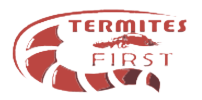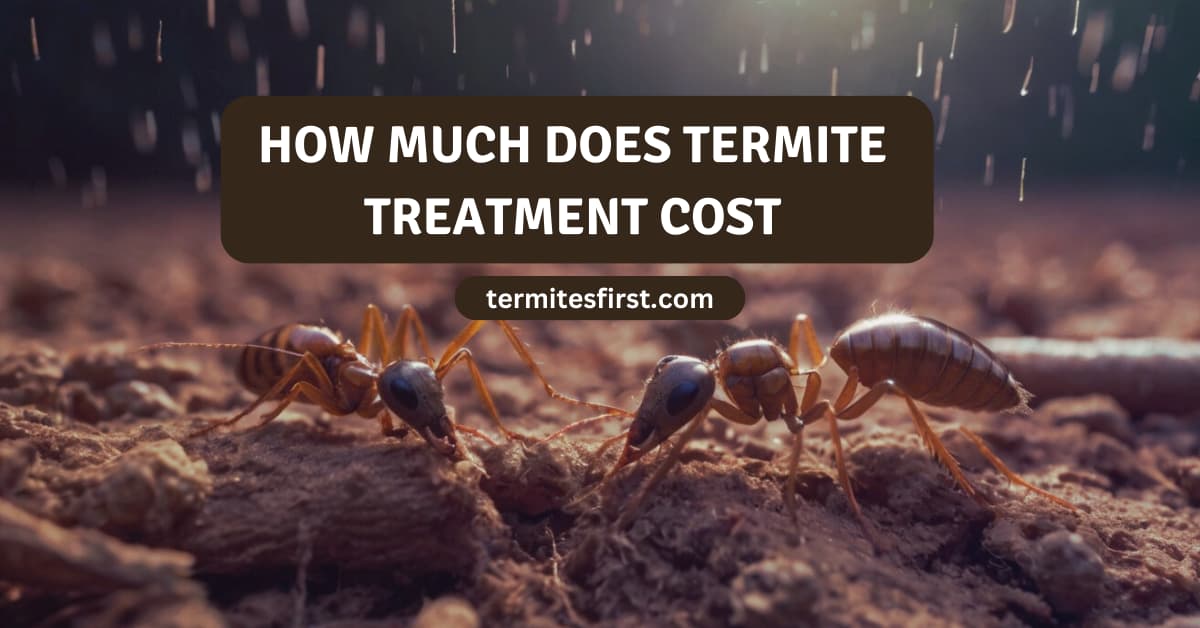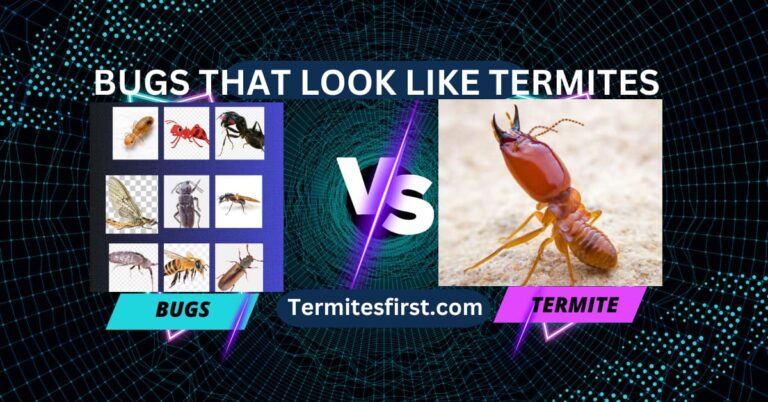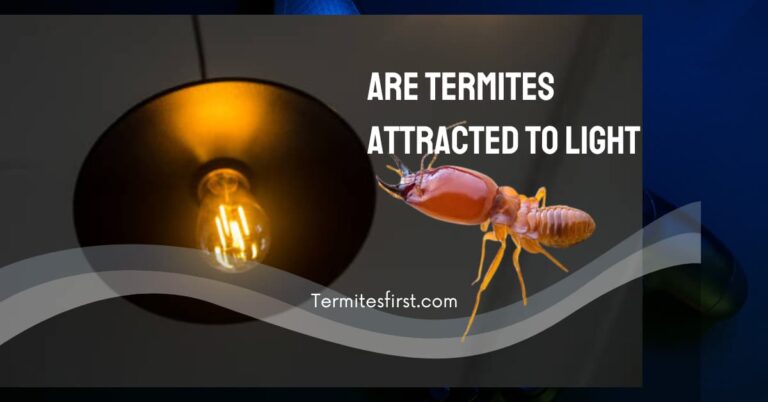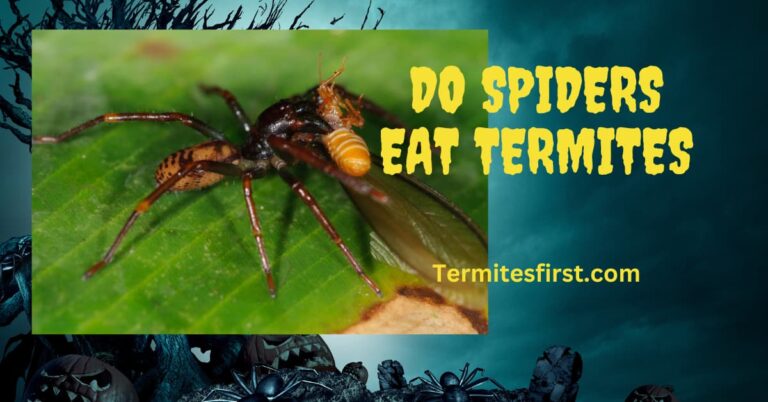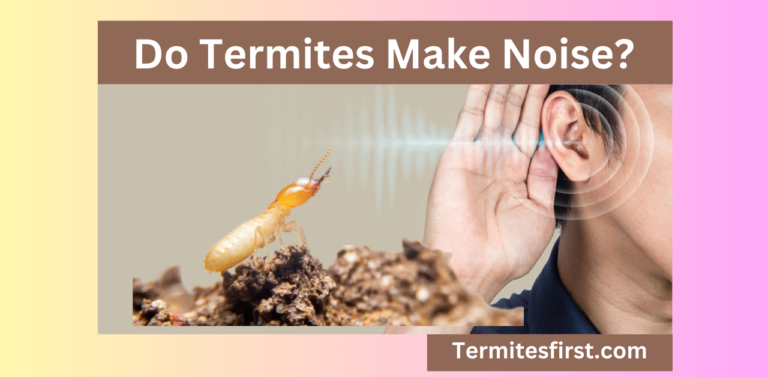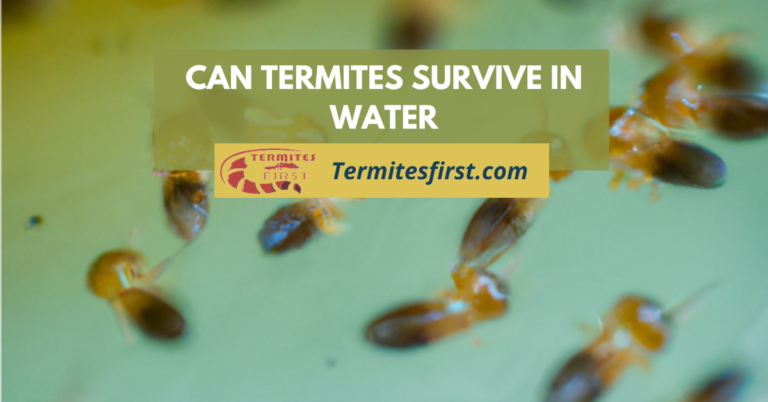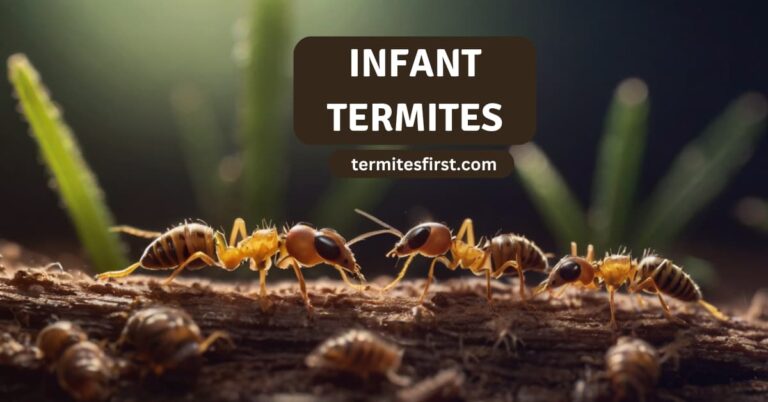How Much Does My Termite Treatment Cost in Arizona?
Diving into termite treatment costs requires knowing a few key factors that affect pricing. As an educator, I know how futile that can be without complete, quality information.
Cost varies based on size of infestation, type of treatment needed, and the location of the property, but generally falls between $200-$900. Bait systems and heat treatments typically cost more, while chemical treatments average at a lower price.
As you navigate your pest control options, it’s important to understand these elements in order to choose wisely. Knowing these intricacies helps you roll out the most effective pest management strategies while staying within budget.
Main Insights:
- Knowing the average costs of the various termite treatments is key to budgeting accordingly. The cost of termite treatment ranges from $300 to $5,000 or more based on the type of treatment, area of the country, and level of infestation.
- Regional differences can have a significant impact on treatment costs. Climate, termite species, and local market competition are hugely important factors when it comes to pricing.
- In Arizona, unique termite species and warm climate conditions shape the challenges faced. These factors lead to unique treatment needs and treatment cost considerations.
- Different types of treatment, like baiting systems, liquid treatments, and fumigation, all come with different price points and levels of effectiveness. Homeowners need to determine what is best based on their particular infestation situation and budgetary limitations.
- While DIY termite control can save money, it poses a greater risk of ineffective treatment and hidden costs. It’s worth considering these costs against what you gain by bringing on a professional.
- Preventative measures and regular inspections are key to keeping long-term termite treatment costs down. These preventative approaches ensure you do not suffer from severe damage and expensive restoration.
Average Termite Treatment Costs
There are various termite treatment methods, each with its own associated costs, including termite extermination and termite damage repair costs. Here’s a table that lays out average costs across different treatment options.
| Treatment Method | Average Cost Range |
| Liquid Treatment | $3 to $6 per sq. ft. |
| Bait Systems | $8 to $12 per linear ft. |
| Fumigation | $1,200 to $2,500 |
| Heat Treatment | $1 to $2.50 per sq. ft. |
| Chemical Treatment | $1,200 to $2,500 |
Regional Cost Variations
Termite treatment costs will differ significantly based on your region. That’s a $12,520 difference between the lowest and highest treatment costs in California!
For an average full liquid treatment on a 2,500 sq. Ft. Home, you should expect to pay about $650. In areas like Phoenix, it costs between $320-$1,260 for the same size home.
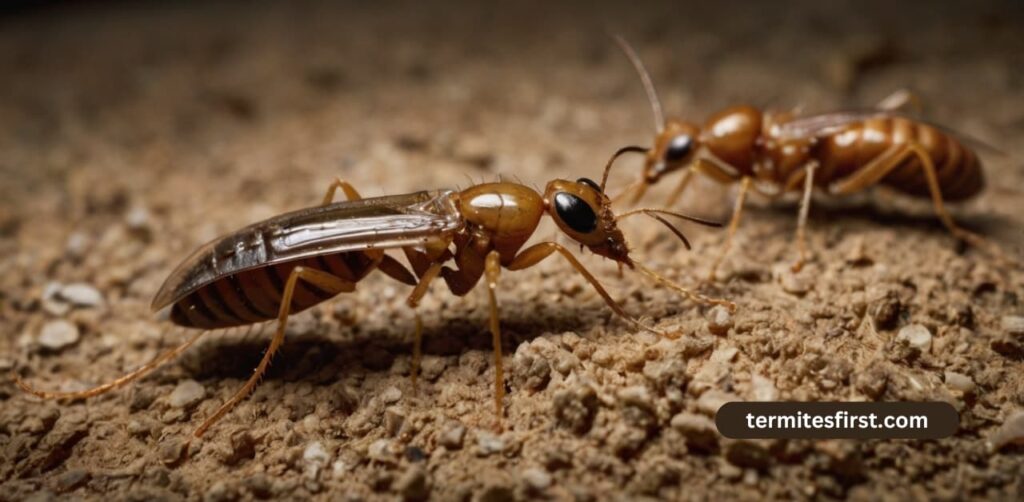
Local pest control market competition can make a huge difference. Further, climate and species of termite present in your area are a big factor. Wetter climates and states that harbor more aggressive termite species will increase the cost of treatments. This increase is largely attributed to the complexity of the treatments needed.
Average Costs in Arizona
In Arizona, termite treatment costs are a reflection of the harsh environmental challenges homeowners are likely to face. The state’s dry climate is ideal for a couple of species of termites, which thrive under those conditions.
Consequently, the cost of treatment generally runs between $320 and $1,260. Arizona’s costs are much lower than their neighboring states. This is primarily due to the successful application of bait systems and chemical treatments designed for the area’s unique requirements.
One of the most important pest control issues faced by Arizona homeowners are subterranean termites, which need to be managed carefully with specialized, effective treatment methods.
Nationwide Cost Comparisons
Here’s a table showing nationwide average costs for various termite treatments:
| Treatment Method | Nationwide Average Cost |
| Liquid Treatment | $1,000 to $9,000 |
| Bait Systems | $1,500 to $2,500 |
| Fumigation | $1,200 to $2,500 |
| Heat Treatment | $1,000 to $3,000 |
| Chemical Treatment | $1,200 to $2,500 |
Urban centers are more expensive than rural areas. This is largely a result of rising demand and rising costs of operations in urban areas.
The species of termite has a huge impact. Areas populated by even more destructive species, such as the Formosan termite, usually experience significantly higher treatment costs. Economic factors such as local labor rates and material availability compound these costs nationwide.
Factors Influencing Treatment Expenses
When trying to determine the termite damage repair costs, there are several factors to consider. The severity of the infestation, the chosen termite extermination method, your location, and your property’s size all significantly influence these costs. Being aware of these factors can help homeowners better prepare for the costs associated with treatment and make a more informed decision.
Severity of Infestation Impact
The extent of a termite infestation is one of the most important factors in deciding how much you’ll pay for treatment. A small termite infestation, while unwelcome, is a recent development that can be addressed. You’re able to prioritize the less intensive treatment because it’s usually easier to treat.
For instance, a small, early-detected colony may be removable with a localized liquid treatment. In comparison, a major infestation, which has been allowed to persist for several years, requires more drastic treatment, like fumigation. This involves more intensive resources and labor, significantly increasing costs.
Reducing treatment costs starts with early detection and intervention. Systematic and regular inspections can catch many of these problems before they worsen, leading to millions in cost savings over the years.
Property Size Considerations
The size of the property has a direct impact on the price of termite treatment. Larger properties need more materials and labor, automatically raising costs. For example, treating a single-family home with a moderate infestation might involve a straightforward application of bait stations around a perimeter.
By comparison, a large, sprawling estate would take many more hours and dollars to do so. The relationship between square footage and cost is clear: larger homes demand greater effort. Homeowners with larger yards can control expenses by consulting with qualified professionals to develop a targeted treatment plan.
This could mean deploying targeted treatments to areas with a high risk, thus maximizing use of resources and reducing costs.
Treatment Frequency Influence
Another factor affecting termite damage repair costs is the frequency of treatment needed. Regular maintenance, including annual inspections or quarterly maintenance on a routine cycle, has proven to save more money in the long run. With regular monitoring, termite infestations can be detected before reproduction occurs, allowing for treatment at a lower cost than expensive interventions.
For example, a homeowner who opts for a quarterly treatment schedule might save money over time. This regularity stops major outbreaks from occurring, which can lead to severe infestations and costly repairs. Other seasonal factors may impact what treatment is needed and when.
In warmer months, termites are more active and may require treatments more often to ensure they’re controlled long-term. When homeowners select standard plans with a focus on proactive management, it creates a buffer that stabilizes long-term costs, preventing termites from causing future damage.
Extermination professionals like those at Bama Exterminating bring a wealth of experience that ensures thorough and safe pest extermination. Their services are more expensive than DIY options. This is a smart investment that avoids the costly expenses of further damage.
It’s worth mentioning that homeowners typically pay 45-90% of total termite treatment costs in repairs alone. With the right professional guidance, this burden can be lessened, emphasizing the importance of regular termite inspections in effective termite control.
Types of Termite Treatments
Homeowners looking to manage a termite infestation have several treatment options available, including professional termite control and termite extermination. Each approach comes with unique advantages, and understanding termite prevention tips can help in choosing the right method for their situation, ultimately reducing future termite damage and associated costs.
1. Baiting Systems Overview
Termite bait systems offer a strategic, long-term solution to infestations by drawing termites in to feed on a poisoned bait. These systems operate with bait stations installed around the perimeter of your home. Termites find the bait, ingest it, and then transport the insecticide back to their colony.
This option can be extremely beneficial to homeowners who want to get rid of termites but want to avoid the chaos of other, more invasive solutions. The cost to install these bait systems is typically in the range of $7 to $12 per linear foot. For a whole house, you should plan on spending between $1,000 to $2,500.
Bait systems have a significant tactical advantage in their specificity. This approach minimizes pesticide application and allows for targeted treatment. Compared to conventional treatments, baiting provides a more discreet option.
It can be a more sustainable long-term solution, though it does involve more upkeep on your end – namely, replacing bait stations each year. Successful strategies include close monitoring and quick replacement, something that professional pest control experts are already known for doing well.
2. Liquid Treatment Details
Liquid termite treatments consist of pouring a chemical barrier around the entire perimeter of the home to keep termites out. This process is proven to be the most effective approach in developing a long-term, protective barrier that keeps termites from invading a building. Liquid treatments usually run from $3 to $20 per linear foot.
The cost depends on the linear feet of your home’s perimeter. Liquid treatments are best in cases where immediate and widespread protection is necessary. They are best fit for houses that already have invasions or residences situated in regions high-risk for infestations.
Homeowners considering this option should take steps to properly prepare their property. This preparation can include clearing debris and ensuring the soil is appropriately treated. This technique offers years of continuous protection, and when done professionally it creates a powerful barrier to termite attack.
3. Fumigation Process Explanation
Fumigation is a whole-house treatment that requires wrapping a home and pumping in a gas that will kill termites. Particularly useful for high-level infestations, this process gets rid of every termite in the treated zone. Fumigation runs an average of $1 to $4 per square foot.
For a home of average size, you can expect to spend anywhere from $2,000 to $8,000. During preparation for fumigation, you must vacate your home and secure food and pets, protecting the health of your family & furry friends.
Though it is a large process, fumigation provides the most thorough treatment with over a 99% effectiveness rate and a life span of up to 15 years. It’s an ideal option for extensive infestations that need total extermination.
Whole-home treatments typically require 1 to 3 days of treatment time, based on the size of the infestation.
Cost of DIY Termite Control
Choosing to control termites yourself can save you a significant amount compared to hiring a professional termite control service. Understanding the various termite treatment costs available is key to making an informed decision. In California, the total termite treatment cost can range from $420 to $2,000, which often lures home and business owners to explore DIY solutions to avoid costly repairs.
Initial Investment Analysis
When it comes to DIY termite control, your upfront costs will differ based on how you plan to treat them. Some popular treatments are barrier control, bait systems, and liquid termiticides. These options usually range from $1.30 to $4.35 per square foot for tentless extermination.
A diligent up-front investment means purchasing the right products, including proven products like liquid termiticides. These products generally range from $50 to $200, depending on the manufacturer and the treated square footage. Budgeting for these up-front expenses is key. It prevents future infestations and can save you a lot of money down the line.
Investing in quality products upfront helps in ensuring the effectiveness of the treatment, potentially reducing the need for further interventions.
Maintenance and Monitoring Expenses
Maintaining DIY termite control measures requires future expenses, mostly for continued monitoring and re-application of treatment products. Regular monitoring is important to catch any signs of re-infestation early, preventing the loss of thousands, if not millions, of dollars in the future.
Suggested maintenance practices involve reapplying barrier treatments every few months and regularly inspecting bait stations. These practices keep infestations in check by catching them early so you can deal with the problem before it turns into a larger, more serious invasion.
This proactive approach saves you a lot of money while guaranteeing that DIY control methods remain effective.
Hidden Costs and Associated Risks
Though DIY termite control brings significant savings, there are hidden costs and risks associated with taking this on yourself. Retreatments due to ineffective treatments can cause even more reinfestation and incur more costs as well as damage to the property.
Knowing these limitations and product warranties is key to preventing any costly surprises when treating termites with DIY products. While professional intervention seems expensive initially, it can be a safer choice in the long run.
To illustrate, the average cost of a liquid treatment for a 2,500 square foot house is about $650, and it offers full, long-lasting protection. Waiting too long for a professional to step in can have major financial repercussions, particularly when damage from advanced infestations is present.
To give just one example, drywood termite treatments run $1,175 – $7,580 based on the severity of the infestation.
Preventive Measures and Strategies
Effective Prevention Techniques
When it comes to termites, using the right termite prevention tips and strategies is half the fight. Among these strategies, utilizing pressure-treated wood in new construction is the most effective approach. This wood is treated with a process that renders it inhospitable to insects, creating a long-lasting barricade that termites won’t touch.
For buildings already in place, treating wood with borates serves as a great preventive measure. Borates are chemicals that leach into wood, making it unappetizing to various termite species. Moreover, proper landscaping plays a vital role in preventing termites. Keeping mulch and woodpiles away from the house foundation will eliminate a clear route for these destructive pests to access your home.
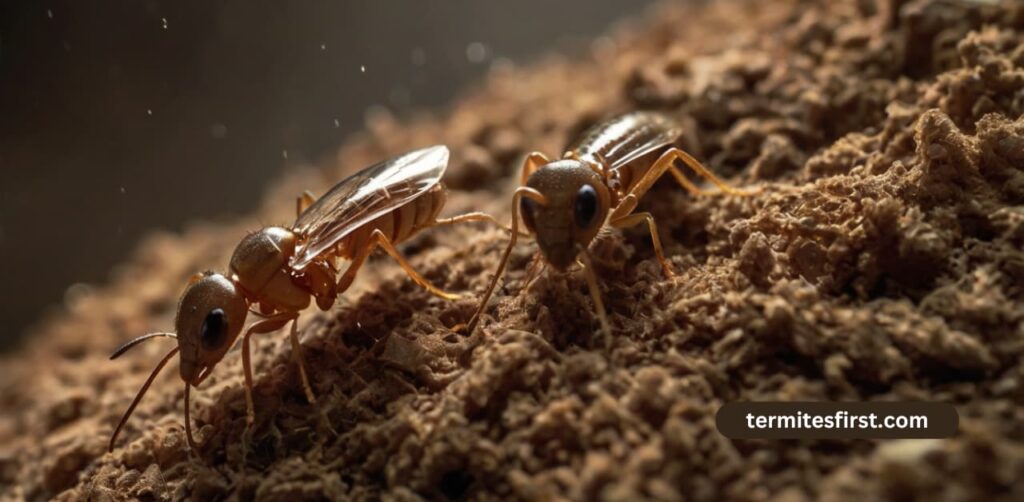
Making sure that water does not pool around the base of your home will stop moisture accumulation, something that is extremely inviting for termites. Erect a protective seal around your property, such as a mesh or sand barrier. This would be a strong deterrent. These barriers are excellent, long-lasting, non-chemical practice urban strategies to keep the termites out.
Finally, employing treated wood in new construction and repairs not only increases the lifespan of the materials but also creates an environment resistant to future termite damage. When executed properly, these preventive measures form a powerful barrier against termite invasions.
Importance of Regular Inspections
Regular inspections are an essential preventative measure in maintaining a termite-free home. By scheduling these inspections, facilities are more likely to catch an infestation before it costs them valuable time and money in the long run. Like with almost any other repair, the earlier the detection the less severe the damage—resulting in significantly reduced repair costs.
A simple inspection checklist starts with searching for mud tubes, discarded wings, and wood that appears to be damaged. These are all clear indicators of termite activity, and catching them quickly can save homeowners a bundle. When you work with experienced professionals, like the experts at Bama Exterminating, you can trust our inspection will be complete.
Pros have experience to know how bad an infestation is, and treat with the most effective methods. Their experience and knowledge are what make them an invaluable partner in keeping your home termite-free.
Cost-Saving Tips for Homeowners
When it comes to termite treatment, homeowners can take several cost-saving measures to manage termite damage repair costs. Keeping your home clean and dry is essential for preventing termites, so make sure to clear away wood debris, mulch, and moisture around your property. Additionally, bundling pest control services can lead to significant savings and discounts on termite extermination efforts.
Negotiate lower rates with pest control providers by obtaining multiple estimates for termite inspection and treatment. Checking online reviews and seeking recommendations helps in finding trusted service providers. By combining services with reliable local companies like Bama Exterminating, you can secure discounts that will save you money on overall termite treatment costs.
Maintaining a dry environment is crucial since termites thrive in moist conditions. Lastly, comparing quotes from various companies ensures you receive the best service at a reasonable price, ultimately helping you avoid costly repairs in the future.
Additional Repair Costs Overview
For homeowners, it’s important to understand the costs that can be incurred when repairing termite damage. For example, structural damage from termites is considered the worst kind of damage, and costs can range from hundreds to thousands depending on the damage caused. The average repair cost for termite damage is about $1,800, but can be as low as $600 and as high as $3,000.
In the case of widespread infestations, whole-home tenting may be needed, which runs $2,000 to $8,000 depending on the size of the home.
Cosmetic vs Structural Damage
When repairing termite damage, you need to know the difference between cosmetic and structural damage. Since cosmetic damage generally needs only surface repairs, like repairing drywall or repainting, these costs can be nominal. These repairs can be as cheap as several dollars or as expensive as $25+ per square foot.
Conversely, when it comes to structural damage, the situation is more serious, as this threatens the safety and soundness of the home. For example, when supporting beams or siding must be repaired, expenses can skyrocket into the thousands of dollars. Wood siding repair, which requires removing and replacing damaged sections, usually runs $50 to $75 a square foot.
Repairing structural damage in a timely manner is essential to ensuring public safety and preventing further deterioration.
Impact of Delayed Treatment
The longer the pest treatment is delayed, the more extensive the damage becomes and the higher the repair cost will be. Ignoring an infestation could cause extreme damage to the property’s frame, creating the need for expensive repairs.
For example, timely intervention can save homeowners from expenses like replacing entire sections of wood framing or cleaning ductwork, which averages between $270 and $500. If left untreated, damage can cut a property’s value by as much as 20%.
This enormous financial blow weighs heaviest on sellers, who must sell their home and disclose any history of damage to prospective buyers.
Repair Cost Estimations
Average repair costs for termite damage will be highly variable depending on things like your local area and the extent of the infestation. Simple repairs such as replacing rotten wooden floors and beams can run up into the thousands of dollars.
It’s always wise to get several quotes before proceeding with a project. Termite tenting with tent gas fumigation falls in the range of $1-$4 per square foot. For a typical sized home, that amounts to $2,000-$8,000.
When an infestation occurs, budgeting for the inevitable repairs and replacements takes these factors into account and prepares one for the expense. By getting multiple quotes, homeowners can choose the best fit for the project and save money in the process.
Conclusion
Termite treatment costs range drastically, by knowing the treatment options you can make a better informed decision. The decision to treat termites professionally or do-it-yourself will depend on your budget and the severity of your infestation. Pro treatments usually provide more complete results with warranties that provide added peace of mind. While DIY solutions are money-saving, they don’t always work for bigger infestations. The takeaway Regular inspections and preventive measures are key in cutting costs down the road. Repairing water damage, for example, can quickly add hundreds or thousands of dollars to your cost. Don’t underestimate the damage termites can cause! Therefore, take everything into account, think things through, and pick the best strategy that works for your needs. For more tips and information, check out our other resources and stay one step ahead of termites.
Frequently Asked Questions
The average termite treatment cost typically ranges from $200 to $900, but it can escalate to $2,500 depending on the severity of your infestation and the chosen termite extermination method.
Cost averages for termite damage repair costs can vary based on the size of your infestation, the type of treatment, and your location, with professional pest control companies like Orkin or Terminix having different pricing structures.
These treatments, including liquid termiticide applications, termite baits, and building materials infused with termiticides, vary in cost and efficacy.
While DIY termite treatments may cost between 20 to 100 dollars, they often fall short in effectiveness compared to professional termite extermination, especially for severe infestations requiring comprehensive termite damage repair.
Don’t allow wood to contact your home’s foundation, repair leaks quickly, and ensure good airflow to discourage pests. Regular termite inspections are an effective way to catch the first signs of termite damage.
Yes, termite damage repair is sometimes required when termites have compromised wooden structures. Damage repair costs are the biggest factor, with everything from minor cosmetic fixes to extensive structural repairs.
Protecting your home through termite prevention tips is far less expensive than treating a severe infestation or the costly repairs associated with future termite damage over the long haul.
